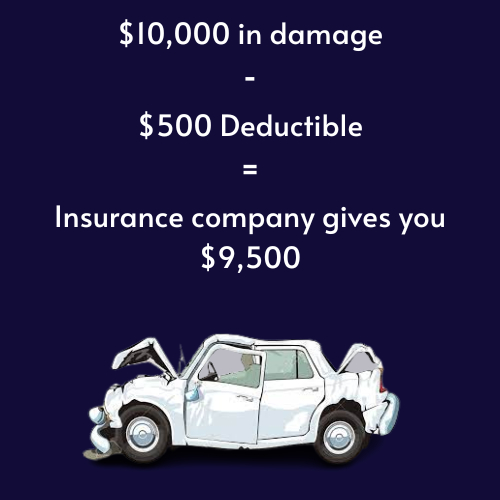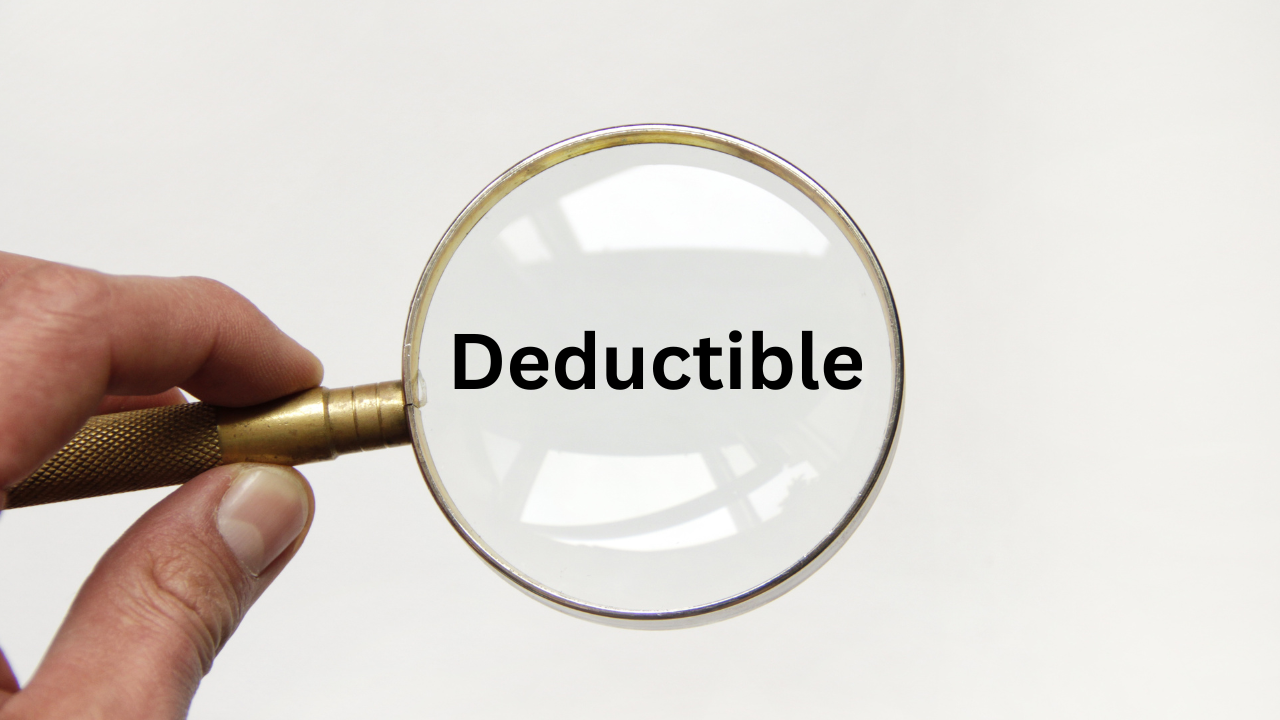The deductible is the amount of money that you are responsible for in the event that you file an insurance claim. In other words, the deductible is the amount of money that the insurance company subtracts from your claim pay-out.
For auto and home insurance, it’s a per event or per occurrence deductible. So every time you file a claim, even if you file a claim one week in the very next week you follow another claim, you have to pay your deductible.
Table of Contents
What Happens If You Can’t Pay Your Car Insurance Deductible?
You do NOT have to pay your deductible every time you file a claim with your auto insurance or home insurance. The deductibles only apply to specific coverages on both your auto and home insurance.
For car insurance you have a deductible for comprehensive coverage and collision coverage. That means if you file a claim and the coverage falls under comprehensive or collision, then you would be required to pay your deductible. If you file a claim and the coverage falls under liability or uninsured motorist coverage, there would be no deductible to be paid by you.
For your homeowners insurance, you would be responsible for paying the deductible if you filed a claim under dwelling coverage or personal property coverage. For coverage like liability and medical payments, you would not need to pay a deductible.
Car Insurance Deductible Example
The first thing to point out: you do not have to take that money and write a check or go hand cash to your insurance company. You are not physically paying that deductible to your insurance company. The deductible is simply the amount of money that the insurance company is going to subtract from the final payout.
Example: you have a vehicle, you cause damage to your vehicle. Let’s say the damage is $10,000. That’s how much it’s gonna cost to take it to the shop and get it fixed.
The insurance company will write you a $10,000 check. However you have a $500 deductible so they will write you a $10,000 check minus your $500.
So you’ll actually get a check for $9,500 from the insurance company.
At that point you can go down to the body shop where your car is getting fixed. You can give them that check for $9,500 and then you would be responsible for paying the body shop the additional $500.

Do I Have To Pay The Deductible If I’m Not At Fault?
Let’s talk about what happens when you’re in an accident, there’s damage to your vehicle and it was not your fault.
In that case, you have two options.
The first option is to file that claim through your insurance company.
As long as you have the right coverage, comprehensive and/or collision, your insurance company is going to pay to repair or replace your vehicle even though you are not at fault.
However, if you run the claim through your insurance company and have them pay for the damage to your vehicle you will be subject to paying your deductible.
Sounds a little off to pay your deductible if you weren’t at fault, but here’s what happens. After your insurance company pays to replace or repair your vehicle and after you pay your deductible, the insurance company then goes after the other person.
This is called subrogation.
Your insurance company goes to the other insurance company and says, hey, it was your insured who was at fault, but we pay paid to fix our insured’s vehicle. You owe us $10,000 because that’s how much we paid to replace or to repair this vehicle.
Once your insurance company receives this money, your insurance company will refund you your deductible. So you have to pay your deductible initially, but you will get it back as soon as subrogation is complete.
Why Use My Car Insurance If I Wasn’t At Fault?
So why would you run the claim through your insurance company if you have to pay your deductible?
Well, it’s your insurance company, your insurance company has a duty to protect you and to help you. So a lot of times it’s faster and it’s easier to run that claim through your insurance company, even though you have to pay your deductible initially. You know that you’re going to get it back once subrogation is complete.
The second option is to file the claim through the insurance company of the person that hit you.
The second option is you can just run the claim through the at fault party’s insurance company. In that case you are not going to have to pay a deductible because you are not at fault and their insurance company will take care of everything. This sounds a lot easier and sometimes it can be, however many times it’s not, because it’s not your insurance company and they don’t have a duty to take care of you, they will take their time, they may give you the run around.
However, most of the time, if it’s a reputable insurance company, they will take care of you and you’ll be just fine running the claim through them. But if you have any questions or you think you’re not gonna get your claim taken care of through the other insurance company, just go to your insurance company, they’ll pay for it, you’ll pay your deductible, but you’ll eventually get that back.
What If The Person That Hit Me Doesn’t Have Insurance?
What if the other person that hits you and causes damage to your vehicle has no insurance or they don’t have enough insurance? In that case, you are going to just have to file the claim through your insurance company and you’re going to have to pay your deductible.
It’s a bad situation, but you’re just out of luck when it comes to paying your deductible. Remember, for your insurance company to pay out, you’ll need to have the correct coverage on your vehicle. We talk about this more on this post here.
What’s A Good Deductible For Auto and Home Insurance?
Most insurance companies give you the option to purchase a $0 deductible, a $250 deductible, $500, $1000, $1500 all the way up to a $2000 deductible.
Sometimes on some homeowners insurance policies, they don’t give a set dollar amount for your deductible instead you can select a percentage deductible. Usually it’s 1% or 2%, sometimes a little bit higher, but that percentage is a percentage of your dwelling coverage.
The dwelling coverage is the first coverage that is listed on your homeowners insurance policy. So for example, you have a $500,000 home, the dwelling coverage amount is $500,000. You have a 1% deductible, so your deductible would be 1% of 500,000. So you would have a $5000 deductible.
Insurance Broker’s Advice On Best Deductible.
As an insurance broker, who’s been in insurance for a long, long time, what do we recommend when it comes to selecting your deductible?
Our opinion would be to get the highest deductible that you can afford. By doing so you’re you’re going to cut down on your monthly insurance premium. So in other words, the higher the deductible, the lower your insurance premium is going to be.
It’s also important to point out that you should not file small claims that you can pay out of pocket. If the damage to your home is only $1,500 and your deductible is $1,000, it makes no sense to file the claim and have your rates go up.
That is not something that we advise doing because the more claims that are on your insurance policy, the higher your premiums are going to be. You only want to file claims that are large and catastrophic.


